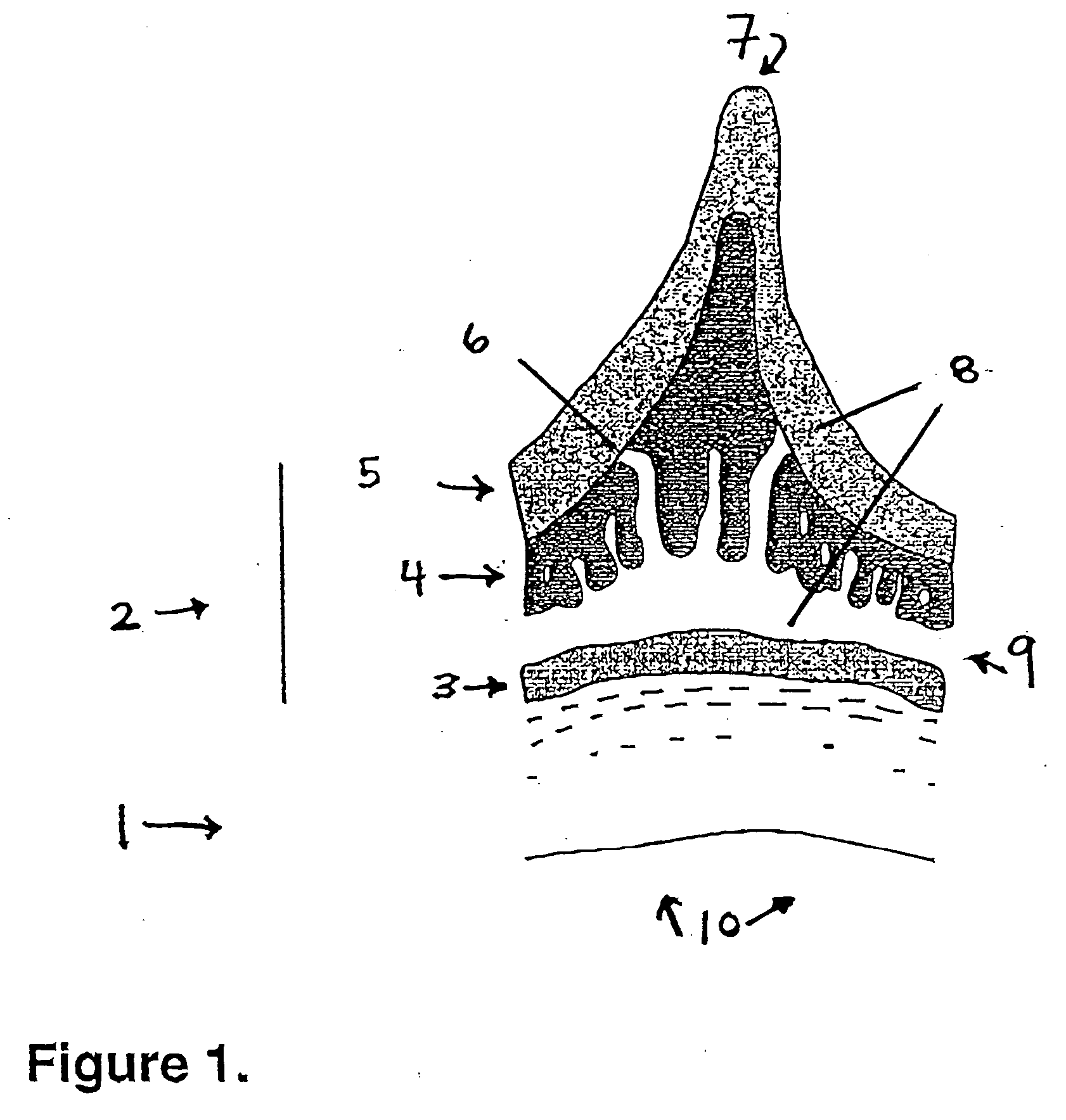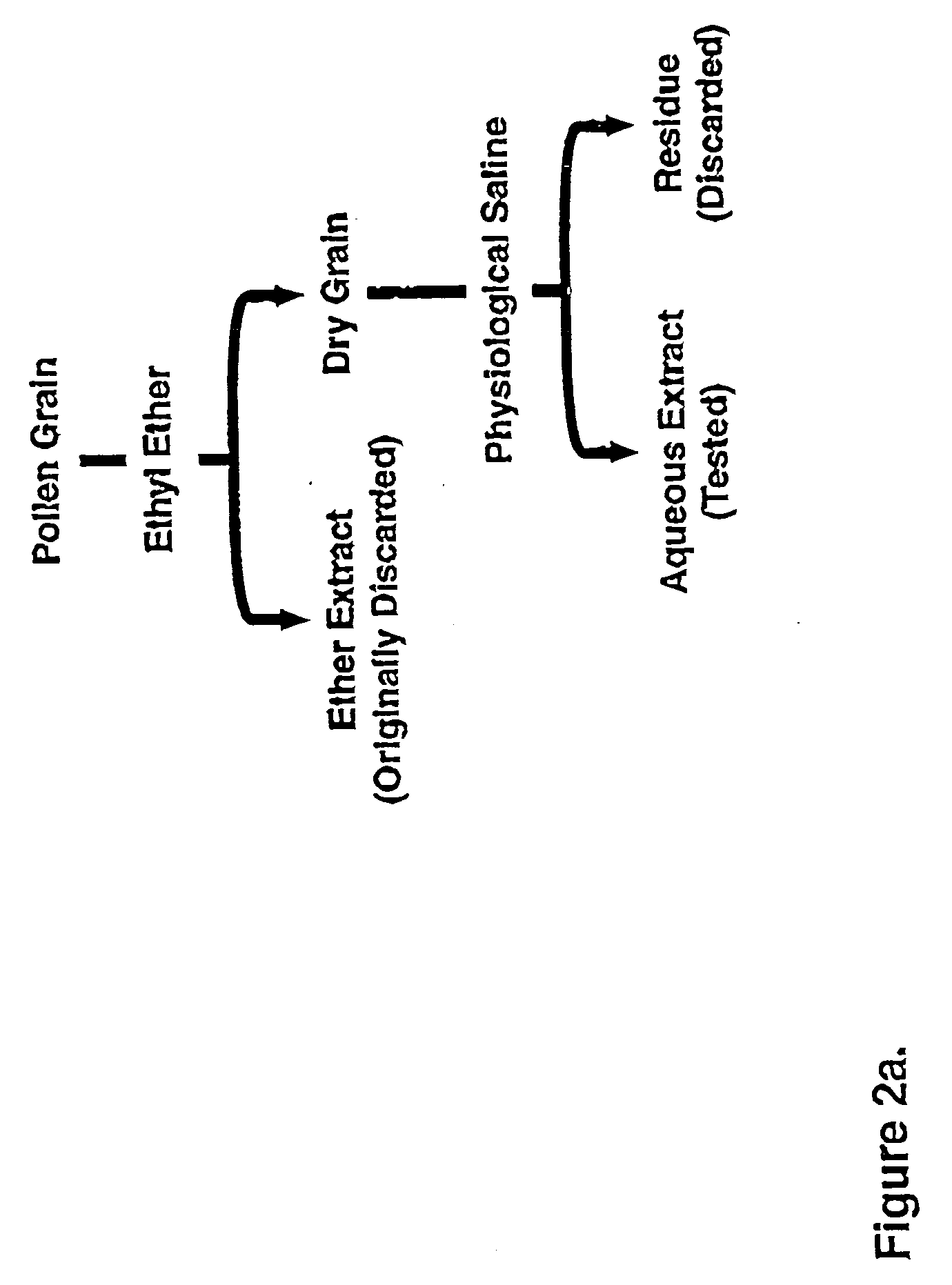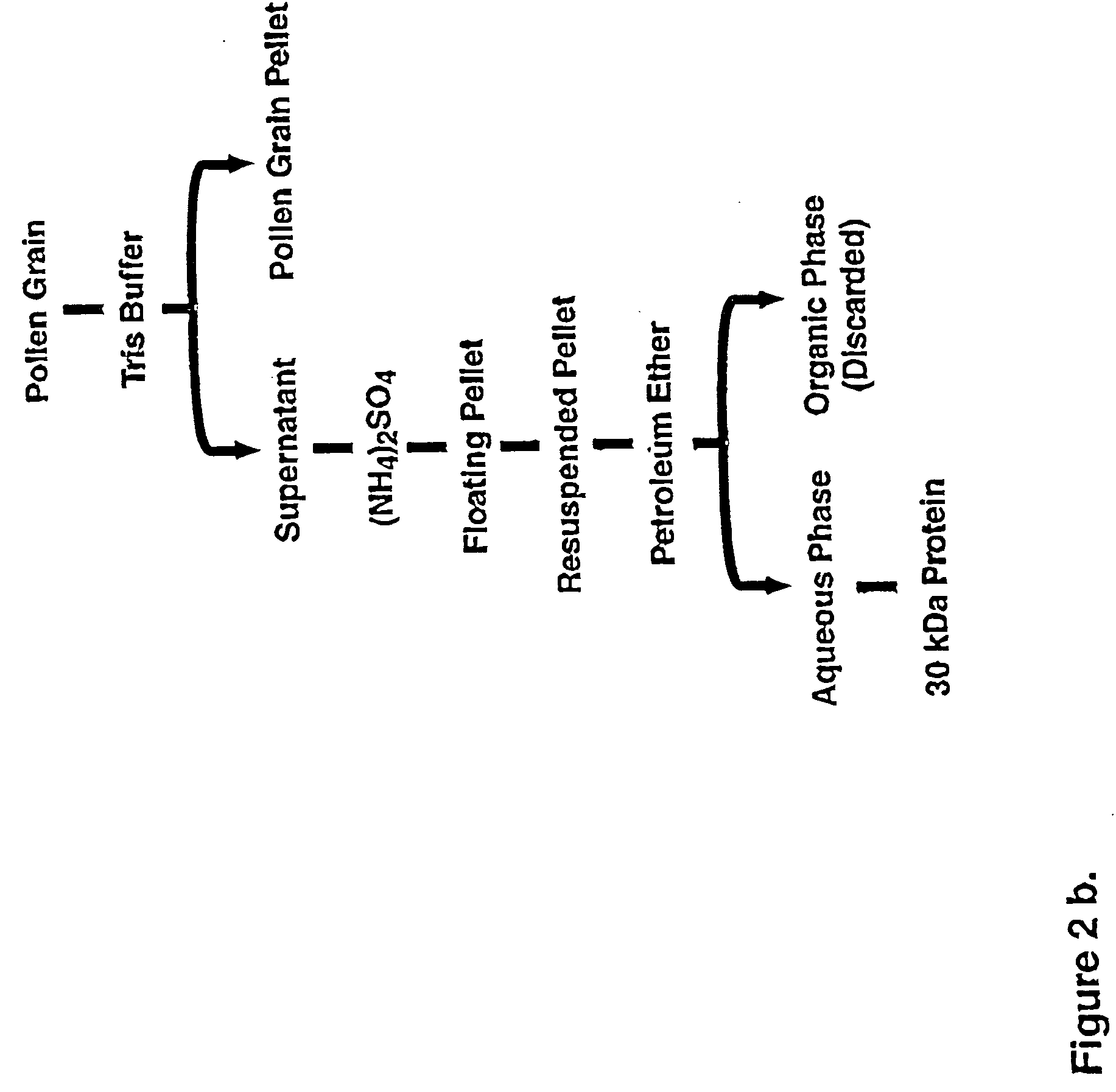Walnut and ryegrass allergens
a technology of allergens and walnuts, applied in the field of allergenic proteins from pollen of ragweed, can solve problems such as pollen-related allergies, and achieve the effect of reducing the allergic response of the individual
- Summary
- Abstract
- Description
- Claims
- Application Information
AI Technical Summary
Benefits of technology
Problems solved by technology
Method used
Image
Examples
example
A. Materials and Methods
[0158] Pollen grains. Complete and defatted Giant ragweed (Ambrosia trifida) pollen grains were purchased from Greer laboratories (Lenoir, N.C.). A control pollen extract from giant ragweed was purchased from Bayer, Inc (Spokane Wash.) and also used for skin tests in dogs; a pollen extract mixture of giant, short and Western ragweed was purchased from Bayer, Inc. for clinical percutaneous skin tests in humans.
[0159] Protein quantification and amino acid sequencing. Protein was quantified with the Bradford assay using gamma globulin as standard. Bradford, M. A. (1976) A rapid and sensitive method for the quantification of microgram quantities of protein utilizing the principle of protein-dye binding. Analytical Biochemistry 72: 248-254. Amino acid sequences were determined with tryptic peptides by mass spectroscopy by the Protein Structure Laboratory, University of California, Davis.
[0160] Protein labeling with monobromobimane (mBBr). Protein solutions wer...
PUM
| Property | Measurement | Unit |
|---|---|---|
| pH | aaaaa | aaaaa |
| Tm | aaaaa | aaaaa |
| temperatures | aaaaa | aaaaa |
Abstract
Description
Claims
Application Information
 Login to View More
Login to View More - Generate Ideas
- Intellectual Property
- Life Sciences
- Materials
- Tech Scout
- Unparalleled Data Quality
- Higher Quality Content
- 60% Fewer Hallucinations
Browse by: Latest US Patents, China's latest patents, Technical Efficacy Thesaurus, Application Domain, Technology Topic, Popular Technical Reports.
© 2025 PatSnap. All rights reserved.Legal|Privacy policy|Modern Slavery Act Transparency Statement|Sitemap|About US| Contact US: help@patsnap.com



